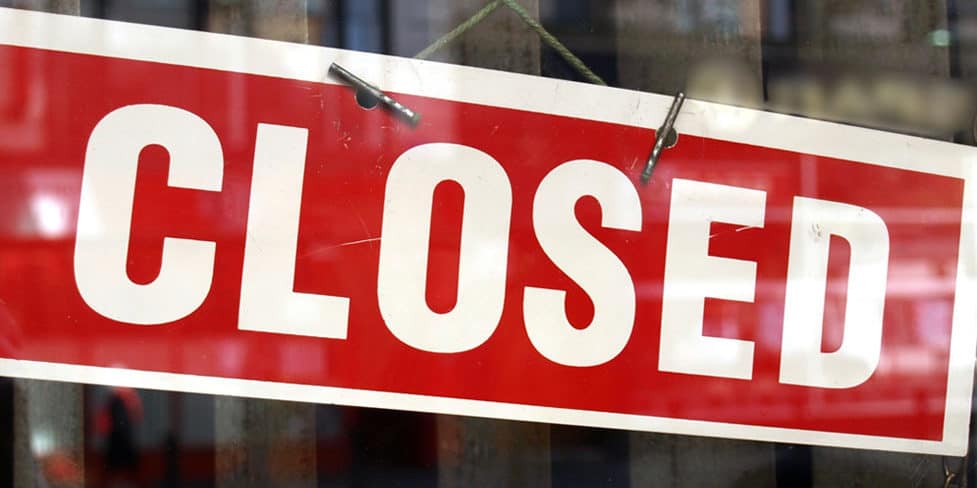First Gazette Notice for Compulsory Strike Off Described
First Gazette Notice for Compulsory Strike Off Described
Blog Article
A Comprehensive Guide to the Compulsory Strike Off Procedure in Corporate Administration
The compulsory strike off procedure, an important aspect in corporate administration, serves as a mechanism to apply compliance and maintain the stability of the company setting. As services develop and circumstances adjustment, the requirement to strike off a firm may occur for various factors.

Factors for Compulsory Strike Off
What scenarios bring about the necessity of a required strike off in corporate administration? There are numerous crucial reasons that may motivate the initiation of a required strike off treatment for a business. One typical situation is when a business fails to comply with its statutory obligations, such as sending yearly returns or monetary statements to the relevant authorities. Non-compliance with regulatory requirements can raise issues regarding the firm's operations and economic wellness, leading to the decision to strike off the firm from the register.
In addition, firms that have actually ceased trading or are no much longer executing any kind of business activities might likewise face compulsory strike off. This might be due to insolvency, mergings, or just a choice to wind up the firm. In such situations, maintaining the business on the register would serve no objective and might potentially develop confusion among stakeholders.
Ultimately, the necessity of a mandatory strike off in company administration develops when a firm is no longer running in accordance with the legislation or has actually ended up being obsolete, necessitating its elimination from the authorities records.
Lawful Implications and Threats
Given the situations that motivate a compulsory strike off in business administration, it is critical to recognize the lawful ramifications and risks linked with such actions. When a business is struck off the main register, it stops to exist as a lawful entity. This can have serious repercussions for shareholders, supervisors, and financial institutions. Supervisors might deal with individual obligation for business debts sustained after the dissolution, revealing their possessions to prospective seizure. Investors lose their financial investment in the company, and creditors might find it challenging to recoup financial obligations owed to them.
Moreover, there are legal repercussions for people associated with the management of a firm that has actually been forcibly struck off. They might be disqualified from working as directors in the future, face fines, or perhaps jail time if transgression or deceptive tasks are discovered. Furthermore, the reputational damage from an obligatory strike off can have enduring impacts on people and their capacity to involve in future service endeavors. Recognizing these lawful implications and risks is crucial for all stakeholders entailed in the corporate administration procedure to navigate potential risks and guarantee compliance with the regulation.
Action In the Strike Off Refine
Launching the required strike off procedure in company governance entails a collection of prescribed steps detailed by regulatory authorities. The very first step commonly requires the company to submit an official application or notification to the pertinent federal government agency or registrar signaling its intent to be struck off the official register. Consequently, the business is commonly needed to settle any type of exceptional obligations, financial debts, or tax obligations to make sure compliance with regulative requirements.
As soon as the initial documentation is sent and monetary commitments are fulfilled, the regulative body will publish a notification in the official gazette or a comparable magazine to inform stakeholders regarding the impending strike off - compulsory strike off. This notice serves as a final possibility for any interested events to increase objections or existing valid factors why the business ought to not be liquified
Following the publication of the notice, the governing authority will proceed with the strike off process if no substantial arguments or challenges occur. click here to read The company will after that be formally dissolved, and its name will be gotten rid of from the register, effectively marking the conclusion of the mandatory strike off procedure in corporate governance.
Records Needed for Strike Off
In conformity with regulative guidelines, particular documents should be provided to assist in the strike off procedure in business governance. Furthermore, monetary statements, such as the company's newest balance sheet, have to be consisted of to make sure that all economic responsibilities have been worked out before initiating the strike off procedure. It is necessary to make sure that all the requisite documentation is meticulously prepared and submitted in accordance with the recommended standards to accelerate the strike off process successfully.
Post-Strike Off Considerations and obligations
Complying with the conclusion of the needed paperwork for strike off, focus changes to the post-strike off obligations and considerations that are important in the company administration procedure. Once a company has been struck off the register, it is critical to ensure that all staying properties are taken care of suitably. This includes dispersing any type of staying funds among investors and working out any kind of superior financial debts or obligations. Additionally, firm supervisors must ensure that all tax obligations are satisfied, last worker payments are made, and that all needed filings are completed with appropriate regulative bodies.

Verdict
In conclusion, the obligatory strike off procedure in corporate governance works imp source as a necessary device to eliminate inoperative firms from the register. Recognizing the reasons, lawful implications, actions, and documents needed for strike off is essential for conformity with governing needs. It is necessary for business to satisfy their post-strike off responsibilities and consider the implications of this procedure in order to keep good standing and stay clear of possible dangers.
There are numerous essential reasons that may prompt the initiation of an obligatory strike off treatment for a firm (what is compulsory strike off). Non-compliance with regulatory demands can elevate concerns regarding the company's procedures and financial health, leading to the choice to strike off the business from the register

Report this page